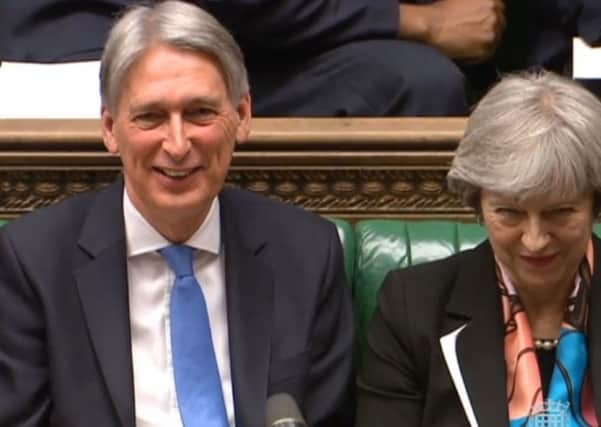Austerity's end close as Hammond hints at spending boost


In a low-key spring statement, Mr Hammond resisted pressure for an immediate boost to public service funds from Labour, whose shadow chancellor John McDonnell branded him “complacent” for making hospitals, schools and police wait another eight months for relief.
Mr Hammond hailed figures from the Office for Budget Responsibility (OBR) upgrading growth projections and forecasting falls in Government borrowing and national debt over the coming years.
Advertisement
Hide AdAdvertisement
Hide AdHowever, the official forecaster also warned the Chancellor is likely to miss his target of returning the public finances to overall balance by the middle of the next decade.
Even achieving balance by 2027/28 would require per capita cuts in spending on services to continue to fall every year in real terms, said the OBR.
The OBR also calculated that Britain will continue to pay contributions into the EU budget until 2064 - 45 years after the official date of Brexit - with the total “withdrawal bill” amounting to £37.1 billion.
The downgrade to 2017 borrowing figures signalled last month by the OBR came to a smaller-than-expected £4.7bn, bringing the total down to £45.2bn.
Advertisement
Hide AdAdvertisement
Hide AdThe Government is set to run a “small” surplus on day-to-day spending in 2018/19, borrowing only for capital investment, said the Chancellor. The OBR expects Mr Hammond to hit his target of reducing the structural deficit below 2% in 2020/21 with £15.4bn to spare.
Debt is forecast to be 1% lower than expected at the time of last autumn’s Budget, peaking at 85.6% of GDP in 2017/18 before falling gradually to 77.9% in 2022/23.
GDP growth for 2018 was upgraded by a tenth of a percentage point to 1.5% but remains virtually static in following years, at 1.3% in 2019 and 2020, 1.4% in 2021 and 1.5% in 2022, at a time of a strengthening global economy.
Mr Hammond said the forecasts confirmed “the first sustained fall in debt for 17 years, a turning point in the nation’s recovery from the financial crisis of a decade ago. Light at the end of the tunnel”.
Advertisement
Hide AdAdvertisement
Hide Ad“If, in the autumn, the public finances continue to reflect the improvements that today’s report hints at, then ... I would have capacity to enable further increases in public spending and investment in the years ahead while continuing to drive value for money to ensure that not a single penny of precious taxpayers’ money is wasted.”
A Treasury spokesman later said that the Chancellor was unlikely to use all of the £15.4 billion headroom indicated by the OBR figures.
Priorities for any spare money would be to “get the deficit down, keep taxes low and - if there is still flexibility - he has indicated that he would be in a position to do more to support public services”, said the spokesman.
Although there were no tax and spend announcements in the 26-minute statement, Mr Hammond took the opportunity to announce a number of consultations which will feed into his Budget in the autumn.
These include studies on:
- The tax framework relating to the giants of the digital economy;
- More frequent revaluation of business rates;
- The impact of VAT on small businesses;
- Cutting plastic waste.